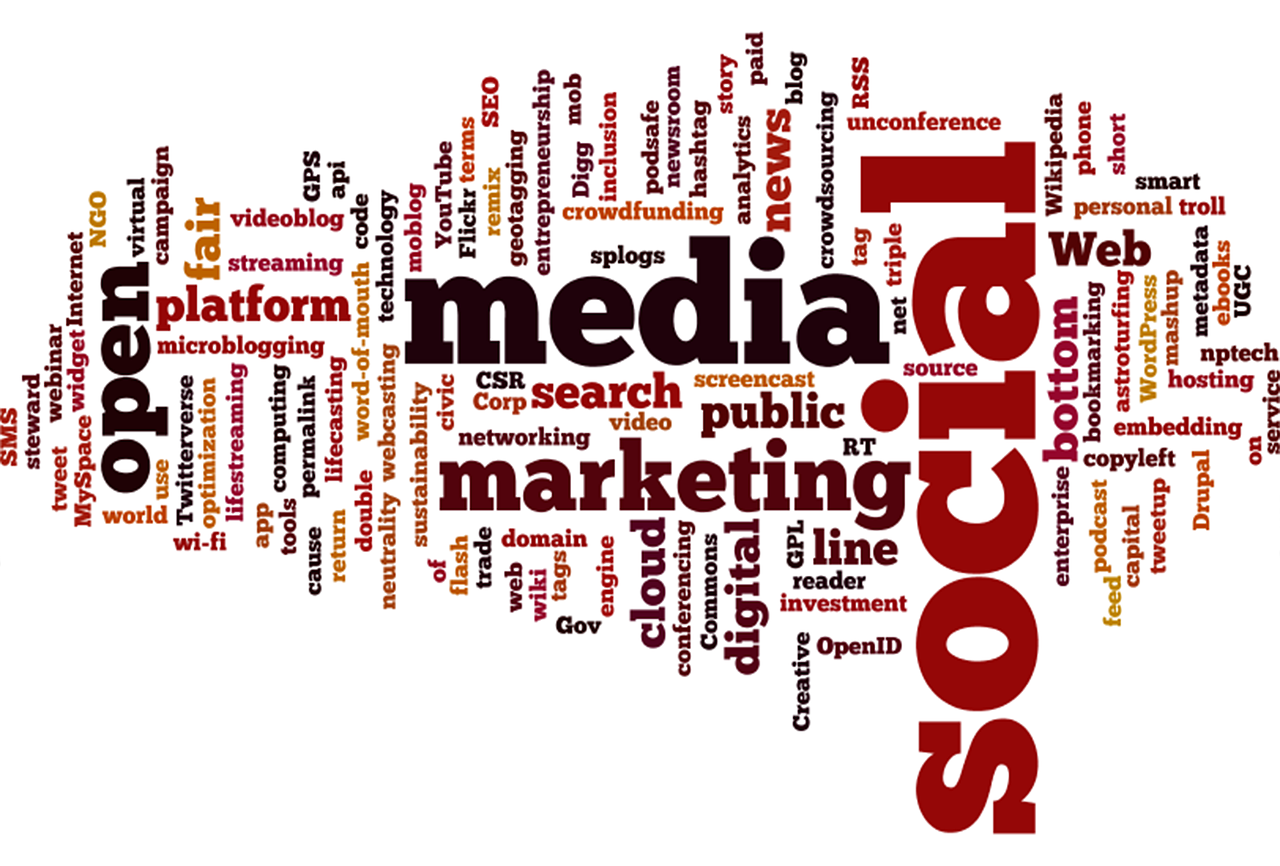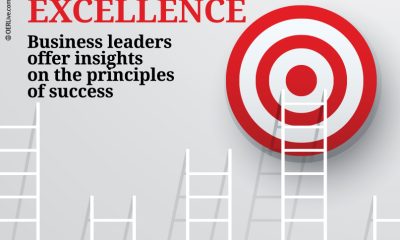Featured
Campaign Trail: Advertising Trends for 2019

Industry experts in the advertising field discuss trends for 2019 and the future of advertising industry.
Elda Choucair, CEO – PHD Media Middle East North Africa
Ravi Rao, CEO – Mindshare Media Middle East North Africa
Satish Mayya, CEO – BPG Maxus
Rani Raad, President, CNN International Commercial
How have ad agencies fared in 2018? What were the biggest areas of growth?
Choucair: Unfortunately, 2018 will end with a further reduction in advertising investments on the previous year. Single digits it may be, but it comes on the back of several years of decline. Digital is rising rapidly, even at the expense of TV but particularly print. As budgets are under pressure and market conditions soft, clients are prioritizing short-term results and investing more and more in data and technology, programmatic, content and influencer marketing. In turn, we’re seeing growth in our more data-driven and content-driven marketing services, as well as our technology and transformation consulting services. Following our network expansion into the Levant, we’ve seen good results from both Lebanon and Egypt.

Elda Choucair, CEO – PHD Media Middle East North Africa
Mayya: How an optimist would put it “we have lost on billing but gained on valuable experience.” It’s been a tough year for advertising industry but for a media plus agency like ours it has been great on the kind of different work we have been involved in. Writing content scripts to managing dinner parties have been our day job lately.
Rao: Agencies have had roller-coaster years since 2017, having had to face scores of mega pitches, movements, resulting in reduction of Adspends and revenues. The biggest areas of growth have been in digital, data & technology, analytics and content primarily on account of the dire need for stretching the media dollars for better business results.
Raad: CNN is going through a strong period of growth. Commercially, we are on track to double our international digital business and further grow our leadership position in the pan-regional TV space.
This transformation is only set to continue as we work within our new corporate structure as part of AT&T to deliver a more personalised user experience. With this greater personalisation, we look to a future of radical change in how audiences around the world consume our product as well as the way that commercial partners work with us.
What are your predictions for 2019? In which direction do we see the industry moving? (Technology, Mobile, Web, Print, TV, Outdoor, etc.)
Mayya: We are not predicting in favour of any one medium. We are of the opinion that crush for digital and technology will end, and we will consider media worthiness on a communication objective. Technology which in itself is not a specific media, will continue to help communication agenda, and we will come out of data driven approach to data supported approach.
Rao: 2019 will see a tipping point where Adspends on digital will, for the first time overtake TV in MENA mainly driven by increased spends on search that had been neglected for several years. The need for performance marketing and measuring outcomes rather than media outputs have forced marketers and advertisers to focus on this area. The big mistake is in ignoring the power of TV and what it provides for the audience at large. Mobile is the prime mover and will only continue to strengthen further. Take the recent data published by The Global Web Index for Saudi that shows one-third of internet users in the age group of 16-24 do not watch tv!
But then, even among this target segment the same content is viewed online on mobile or through delayed viewing on smart tv. Extraordinary times, and the lines are blurring the most between tv and online, so it calls for a greater measurement of video per se.
Raad: I don’t see the future as a binary choice between platforms. 70% of our business is multi-platform as we combine the best of CNN across TV, digital and social media for our commercial partners.

Rani Raad, President, CNN International Commercial
Rani Raad, President, CNN International Commercial
Choucair: In 2019, we will see a continuation of most of the trends we’ve experienced lately. These include a focus on the lower end of the purchase funnel and sales, on performance marketing, on data and analytics, micro-targeting and tailored content at scale. Programmatic advertising will spread further and deeper into various media, including OOH, and into premium formats and inventory. The digitization of marketing will see Google and Facebook claim an ever-higher share of total investments in MENA, reaching a third, although their growth is slowing a little. Other media will see their share of the total decline further, a little slower than in the past though. Mobile marketing will keep on growing. Let’s not forget that 5G is around the corner and many telecoms in the region are already testing the technology. What’s really driving all this is a move from mass-marketing to individual marketing at scale and we will see progress into addressable TV, with the rise of IPTV homes in the region.However, the platform that excites me the most for 2019 is mobile. The roll-out of 5G will bring a total reimagining of the use of mobile, and content providers and brands will need to adapt accordingly. The majority of digital consumption of CNN is on mobile, and I expect 5G to be the springboard for future growth and innovation.
What is the ‘next big thing’ in the advertising industry?
Rao: An end-to-end solution from insights to analytics with content playing a crucial role in the entire chain of communication. Adaptive marketing is a necessity, so a brand has an agile response to counter its competition and be relevant to consumers through relevant content. Easier said than done and this is where all agencies are headed – be it creative or media.
Raad: Augmented Reality has the potential to be huge. With this technology, you can be transported to a location while sitting in your living room. This experience could be to sample goods before purchase, see a destination before booking to go there or be part of a live experience that you could never have otherwise had access to. For me, AR is a gamechanger.
Choucair: The biggest change will actually be invisible. It is all about marketers creating a new infrastructure, choosing the right technology stack and putting it in the hands of the right talent to create meaningful experiences and outcomes out of data and analytics. New roles are surfacing and so are more agile structures and processes, at the client, agency and media end of the spectrum.
Mayya: Next big thing in communication industry will be cleaning up digital media; transparency, credibility and authenticity.
Everyone has been talking about the duopoly between Facebook and Google and that they’ve won the ad tech power game, what are your thoughts on that?
Raad: I understand when marketers turn to the FAANGs if they need scale or performance marketing. However, what if a brand wants to be part of an immersive consumer experience, packed full of storytelling in a premium environment, with an audience of hard to reach affluent decision-makers? That’s when advertisers engage with CNN. In a world where everyone can buy scale, media companies with trust and expertise built up over decades must be confident of using our strengths to differentiate ourselves from some of the shiny new toys in the media landscape

Ravi Rao, CEO, Mindshare Media Middle East North Africa
Choucair: Ad tech is certainly taking prominence in our landscape and there is a rapidly growing number of players in this space, promising brands higher level of relevance and performance. Obviously, Google and Facebook dominate the digital landscape and as such are the default setting for countless advertisers. The rapid growth in digital advertising has presented several challenges for advertisers, such as viewability, fraud, measurability, brand safety and data security. We’ve addressed these through technology and, in cases, regulations like GDPR. Facebook and Instagram have addressed concerns with the measurability of their audience numbers through the compliance with an independent audit of their internal data collection process by the Media Ratings Council (MRC), for example. Google and Facebook’s growth will slow down as they embrace higher standards in terms of content and sales.
Rao: Of course, they raised the bar, and it is evolving even more with data and tech companies carefully (GDPR is just the beginning) manoeuvring around data privacy and piracy. In the end, getting to maximize the business impact is the end game. The ecosystem is now getting enlarged and enhanced with so much of play in the start-ups and SME set-ups, it is hard to predict anything further, except that the transformation in coming months will keep throwing more surprises.
Mayya: They have done a few things right so far. But we have seen tides change very quickly. Specially in a technology led environment all have a fair chance to develop something new and better. And, people are not loyal to a platform which makes the duopoly situation vulnerable.
What do you predict for the ad business within the next 5 to 10 years?
Choucair: There are several angles to consider. Technological developments will lead us to more personalized communications, enriched through augmented reality and responding to more instantaneous physical or behavioral stimuli detected by sensors and devices. Brands will need to evolve further in such a context and rise above their mere functional dimension to reach and stay in people’s consciousness. Our role as marketing agencies will be to engineer the environment in which these brands will evolve and thrive, creating engaging and effective experiences, be they physical or virtual. We’re rapidly expanding beyond media planning and buying, but what remains is our consultative, advisory and executional role for our clients and our mission to grow their business. As automation will take care of the more mundane aspects of our work, we will be able to operate at a higher, broader and even more strategic level with our clients. We may be experiencing disruption and facing our own business transformation, but we’ve always been an agile and resilient industry, so it will be a part if not a contributor to the change and we will not be sidelined by it.
Rao: It is all about speed, provocation and collaboration and the team that adds value to a clients’ business alone will survive. There will be no funnels, just commerce everywhere. And this requires a seismic shift in marketing talent too – the race is on. Exciting times.

Satish Mayya, CEO, BPG Maxus
Mayya: I would rather not comment. It’s very unpredictable, there is a school of thought that predicts ad business will be non-existent in 10 years, and it will merge into the marketing role for companies. With creatives not required anymore, and media helping with planning, advertising agencies will have to drastically reinvent themselves, probably shift more towards being stakeholders with media.
Raad: If we think that the media landscape has changed quickly over the last ten years, then buckle up for what is yet to come. With faster connectivity we are about to enter a whole new world. Audiences will have different consumption habits and content experiences, brands and media will need to adapt quickly, and there will be further consolidation and convergence. All this adds up to an exhilarating rollercoaster, where the only ones enjoying the ride will be the platforms that have consumers at the heart of their business and are nimble enough to make bold choices
Do you think mixed reality will make a big impact in the ad sector in the coming years?
Choucair: Mixed reality is in its nascent age, it’s not a mature technology yet however it is certainly going to happen and will impact the entertainment, retail and gaming industries before it hits the marketing world. Interruptive advertising approaches will be replaced by more relevant, convenient and useful brand experiences, tailored to the individual, the context and the moment. More than a gimmick, mixed reality must add value to people’s lives if it is to succeed.
Raad: As per my previous answer, the likes of AR and VR have the power to be transformative but their impact will be dependent on the technology allowing wider consumer uptake and lower barriers to entry. When these pieces fall into place, it can be a gamechanger.
-

 Magazines2 months ago
Magazines2 months agoOER, October 24
-

 Oman1 month ago
Oman1 month agoShell Oman Partners with Oneroad Automotive Gives Away 2 Forthing Cars as Part of its ‘Win Big’ Campaign
-

 Alamaliktistaad Magazines4 weeks ago
Alamaliktistaad Magazines4 weeks agoAl-iktisaad, November 24
-

 Energy3 weeks ago
Energy3 weeks agoOUTLOOK: Emerging Markets and Renewables – The Twin Engines of Energy Growth for 2025
-

 News4 weeks ago
News4 weeks agoMitsubishi X-force Joins Sayarti’s Fleet: A New Era of Elegance and Performance
-

 Energy3 weeks ago
Energy3 weeks agoOman and Belgium Strengthen Green Hydrogen Partnership with New Landmark Agreement
-

 Auto2 months ago
Auto2 months agoMoosa Abdul Rahman Hassan & Co. Celebrates Launch of 2025 Suzuki Swift and Opening of New Suzuki Showroom in Azaiba
-

 Oman3 weeks ago
Oman3 weeks agoOman Braces for Launch of First Experimental Rocket Duqm-1 on 4 December 2024






























You must be logged in to post a comment Login